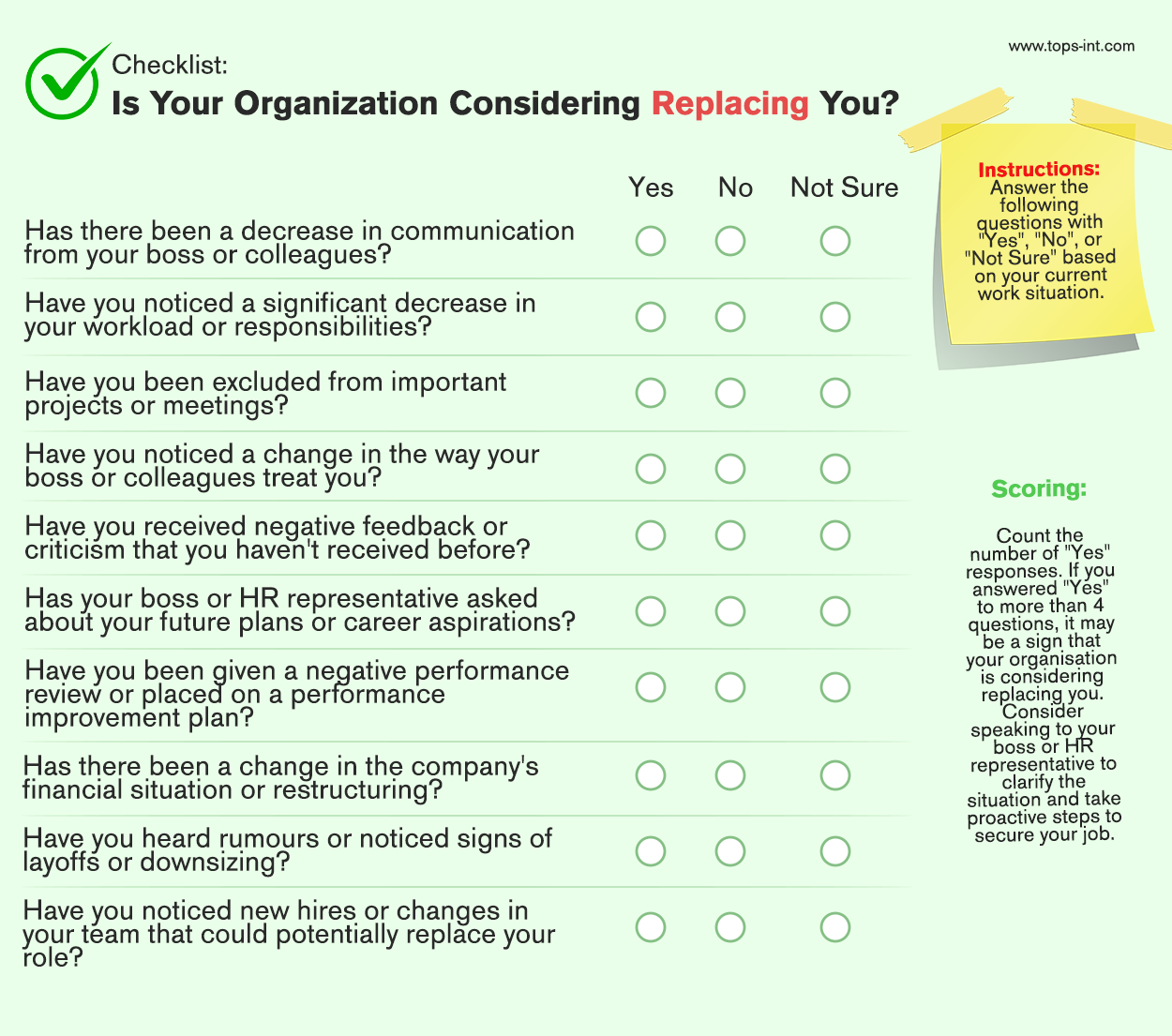Are you feeling anxious about your job security in the IT sector? With recent layoffs happening across the industry, it's understandable to feel uncertain about the future of your career.
So how can you survive and thrive in the IT job market after the recession? Here are some tips to help you navigate the new reality in IT.
1. Effects of Recession on the Overall Economy
Due to the global economic downturn, the IT sector, once viewed as a prosperous and secure sector, has witnessed an abrupt decrease in revenues and profits.
Due to the economic downturn, IT companies are providing discounts and reduced prices to attract and maintain customers. This has reduced their market share and profits. In addition, the recession allows new and existing businesses from developing countries such as China and India to rival prominent IT businesses from developed nations.
The recession undoubtedly had a substantial role in the recent layoffs in the IT industry. Several IT organisations have been forced to reorganise their businesses and reduce expenses due to the recession.
One method is reducing their employees and outsourcing part of their tasks to less expensive areas. In addition to low-skilled individuals, high-skilled and experienced workers displaced by automation or less expensive alternatives were also impacted by layoffs.
Many individuals who lost their employment and means of support due to the recent layoffs in the IT industry have had to face a harsh reality. The layoffs have also reminded the IT industry that it must change and innovate to flourish in the post-recession age.
2. Changing Demands and Technological Advancements
Several variables, including shifting customer expectations, technical developments, and COVID-19's effects, have been implicated in the recent layoffs in the IT industry. Let's look at a few of these elements and how they could affect the IT workforce.
Shifting Consumer Expectations
The IT industry continually develops and changes to meet these needs and expectations. As things progress, some knowledge and services may decline in value, but new developments and talents, such as cybersecurity, AI, and cloud computing, may show up.
To keep up with these changing requirements and preserve market viability, IT companies may need to restructure their staff and activities.
Technological Developments
Technology's quick development and innovation also impact the IT industry. For the IT staff, this may provide both possibilities and difficulties. On one hand, technological developments may help IT professionals increase their output, effectiveness, and innovation.
On the other side, technological development may also be a challenge to IT professionals, who may be unable to keep up with the speed and complexity of the new technology. For instance, machine learning and automation can take over some responsibilities presently handled by human employees.
COVID-19 Pandemic
The IT industry has felt the good and bad effects of the COVID-19 pandemic. On the plus side, the pandemic has raised the demand for IT services and products that can support social media, online education, digital health, and remote work.
Conversely, the pandemic has also hampered supply chains, decreased profits, and raised expenses for certain IT businesses. The pandemic has also increased unpredictability and volatility in the IT industry, which might impact the recruitment and retention of IT personnel.
3. Global Competition and Outsourcing
Global competitiveness and outsourcing are two of the most significant causes of the recent layoffs in the IT industry.
Global competition is the term used to describe the growing pressure from competitors from other countries that provide comparable or superior goods and services at cheaper prices. As a result, local IT firms are forced to innovate, cut costs, or risk losing market share. IT businesses attempt to combat global competition in several ways, including:
- Combining with or buying out rival businesses to access fresh markets, and cutting-edge technology.
- Investments in research and development to produce new goods or enhance current ones.
- Using new business concepts or tactics to set oneself apart from rivals.
Outsourcing is contracting out part or all of the IT tasks to outside suppliers who can do them more quickly or affordably. IT businesses can concentrate on their core capabilities and save operating expenses. Outsourcing has many advantages, including:
- The ability to draw from a bigger pool of knowledgeable, experienced individuals who can do high-quality work cheaply.
- The ability to adapt the size of the IT resources to changing business demands and demand.
- Lower costs and responsibilities related to recruiting, educating, and supervising staff.
Yet, the IT industry and its employees are negatively impacted by both global competitiveness and outsourcing. The following are a few difficulties and drawbacks:
- The loss of employment for domestic IT employees who outsourced suppliers supplant.
- A loss of security and control over data and IT services.
- A decrease in internal skills and talent development results in losing competitive advantage and innovation potential.
As a result, the IT industry faces both possibilities and challenges from global competition and outsourcing. The IT industry and its employees must adapt to these developments to survive and prosper in the challenging and competitive market.
Warning Signs: Identifying Potential Layoffs
As an employee of an IT business, it's crucial to be aware of any warning indications that might point to impending layoffs. Although no one likes to consider the idea of losing their work, it's important to see the warning signals as soon as possible so that you can take precautions to safeguard your livelihood.
Some of the warning indicators to look out for are listed below:
- Declining Sales or Earnings: A company's income or earnings drop is one of the clearest indicators of impending layoffs. IT firms could have to reduce their employees if it cannot generate enough revenue to cover operating costs.
- Budget Cutbacks and Freezes: Budget cutbacks and freezes imposed abruptly by IT firms may indicate the business's financial difficulties. While the business may be trying to reduce expenses to stay afloat, this might signal layoffs.
- Reduced Workload or A Lack of Fresh Initiatives: It might be a clue that the business is having financial issues if one finds that the workload has dropped or that no new projects are coming in. This might jeopardise employment since the firm may be aiming to cut its employees to save money.
- Changes in Management: If management has changed recently, this may indicate that the business seeks to reorganise to save expenses. Since the new management may want to bring in their team or change the current personnel, this may sometimes result in layoffs.
Ways To Increase Job Security
Constantly Learning and Updating Skills
Continuously learning new things and enhancing your abilities is one of the best ways to remain updated in your field. This might include enrolling in classes, attending conferences and seminars, reading trade periodicals, and participating in online training programmes. By doing this, you'll be able to keep up with the most recent innovations and fashions, enabling you to respond quickly to fresh difficulties and chances.
Also, learning new skills may raise the value of your work and boost your promotion prospects. You could also get a more stable job inside your firm or sector by picking up new, in-demand skills.
Building a Strong Professional Network
Networking is a crucial part of having a successful job. You may connect with coworkers, business leaders, and possible employers who can help you keep informed about job openings and industry trends by developing a strong professional network. Also, networking might help you discover fresh viewpoints and ideas that can advance your professional development.
Attend industry conferences, sign up for trade groups, and connect with people on LinkedIn to develop a strong professional network. Always be polite and professional while engaging with people, and be sure to follow up after networking events to stay in contact.
Displaying Your Worth to the Business
Ensuring your employer knows the value you provide to the business is crucial. Take note of your accomplishments and triumphs, and let your boss or supervisor know about them. You might emphasise your contributions to the business to illustrate how valuable you are and how important you are to the team.
Also, it's critical to be proactive and accept new obligations whenever they present themselves. You may indicate that you're eager to learn and develop by volunteering for new initiatives or responsibilities and that you're dedicated to the company's success.
Always be proactive and make professional investments since doing so is an investment in your future.
Upskilling: The Ultimate Layoff Shield

Do You Want To Take The Risk Of Falling Behind?
As an employee in the IT sector, it's natural to feel concerned about job security, especially in today's competitive and rapidly changing job market. Here are three key strategies to help you upskill effectively:
Identifying In-demand Skills
Finding the skills that are most in demand in your sector is the first step in upskilling. This entails staying updated with emerging technology and trends, reading trade journals, and participating in conferences and seminars. Depending on your area of expertise, in-demand abilities might vary, but some examples include the following:
- Cloud computing
- Machine learning and artificial intelligence
- Cybersecurity
- Data visualisation and analysis
- Agile and DevOps Approaches for mobile app development
You can concentrate your upskilling efforts on the areas most beneficial to your present or potential employers by determining the most in-demand skills in your industry.









